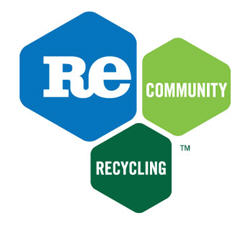The U.S. Environmental Protection Agency (EPA) is launching a new design competition called the Campus RainWorks Challenge to encourage student teams on college and university campuses across the country to develop innovative approaches to stormwater management.
Black carbon aerosols and tropospheric ozone, both humanmade pollutants emitted predominantly in the Northern Hemisphere's low- to mid-latitudes, are most likely pushing the boundary of the tropics further poleward in that hemisphere, new research by a team of scientists shows.
Climate change projections indicate a steady increase in temperature progressing through the 21st century, generally resulting in snowpack reductions, changes to the timing of snowmelt, altered streamflows and reductions in soil moisture, which could affect water management, agriculture, recreation, hazard mitigation and ecosystems across the nation.
The National Academy of Sciences will conduct a comprehensive review of the Environmental Protection Agency's Integrated Risk Information System (IRIS) program's assesment development process.
Climate Policy Initiative (CPI)'s analysis of national systems that track emissions and activities to reduce emissions in the U.S., Germany, Italy and China revealed that existing systems allow these nations to determine if they are meeting their emission reduction targets, but do not allow them to identify which of their policies are most effective and efficient.
A safe haven could be out of reach for 9 percent of the Western Hemisphere's mammals, and as much as 40 percent in certain regions, because the animals just won't move swiftly enough to outpace climate change.
A new report titled "Irrational Exemption: Tar Sands Pipeline Subsidies and Why They Must End" says there is a $375 million subsidy for tar sands oil because oil and gas industry lobbyists have exempted them from paying into a fund designed to help clean up oil spills.
CyberLock Security Systems is working to help water utilities meet EPA guidelines for protecting watersheds and sources of drinking water.
The U.S Environmental Protection Agency has entered into three settlements totaling $6,605,080 to help pay for groundwater cleanup at the South El Monte portion of the San Gabriel Valley Area 1 Superfund Site in Los Angeles, Calif.
If you live and work in the Washington, DC area, this year’s number one Most Endangered River may hit closer to home than you might think. The Potomac River provides drinking water for more than five million people in Maryland, Virginia and the District.
The area of the globe covered by wetlands (swamps, marshes, lakes, etc.) has dropped by 6 percent in 15 years. This decline is particularly severe in tropical and subtropical regions, and in areas that have experienced the largest increases in population in recent decades.
Scientists say that to live sustainably, we should use no more than 40 percent of the water from the Colorado River Basin. As it is now, we use 76 percent, nearly double the sustainable benchmark.
Being in a hospital is tough enough without having to worry about how the building will hold up during an earthquake. Now, veterans in Memphis, Tenn., can rest assured knowing that their medical center, even though it is located in the most active earthquake zone in the Eastern United States, has the most sophisticated seismic structural monitoring system in the country.
Average fuel economy (window-sticker values) of cars, light trucks, minivans and SUVs purchased in April was 23.9 mpg, down from 24.1 in March, but the same as in February. Despite the drop, fuel economy is up 3.8 mpg (or 19 percent) from October 2007, the first month of monitoring by UMTRI researchers Michael Sivak and Brandon Schoettle.

Delaware hopes to create roughly 80 new green jobs in early 2013 by investing in a state-of-the-art recycling facility.
When the Deepwater Horizon drilling rig exploded April 20, 2010, residents feared that their Gulf of Mexico shores would be inundated with oil. And while many wetland habitats and wildlife were oiled during the three-month leak, the environmental damage to coastal Louisiana was less than many expected, in part because much of the crude never made it to the coast.
The Southeastern Pennsylvania Transportation Authority, the nation’s sixth-largest public transport organization, has signed a three-year contract with SourceOne energy consulting firm. SEPTA is looking for support for electricity and natural gas procurement.
Three research teams affiliated with Iowa State University’s Bioeconomy Institute have won Iowa Energy Center grants to help them combine biorenewable technologies for better production of fuels and chemicals.
The city of Unalaska, Alaska, will undertake a major upgrade of its municipal sewage treatment plant under a settlement of a Clean Water Act enforcement action filed against the city and the state of Alaska by the Department of Justice on behalf of the Environmental Protection Agency.
The U.S. Fish and Wildlife Service today announced the extension of a public process exploring the expansion of incentives for voluntary partnerships with private landowners and other land stewards to help conserve imperiled wildlife.